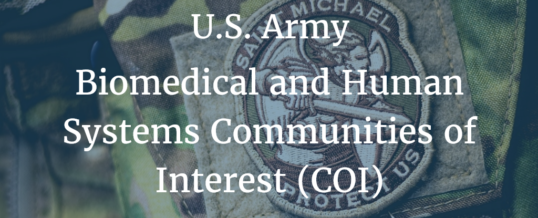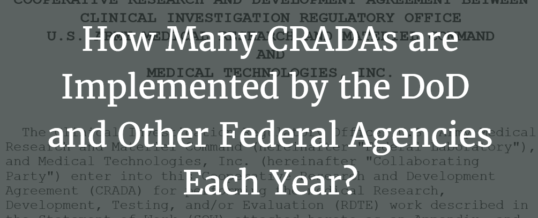The Department of Defense (DoD) and other military assisting Federal Agencies have a large and diverse community of subject matter experts (SME) who are eager to collaborate with industry and universities. These extraordinary SMEs are driven to accelerate new and novel dual-use technologies forward to clinical and operational settings. There are thousands of healthcare providers in 167 DoD medical treatment facilities within the U.S. (43 Army MTFs); tens of thousands of researchers in the
Continue Reading →NOV





